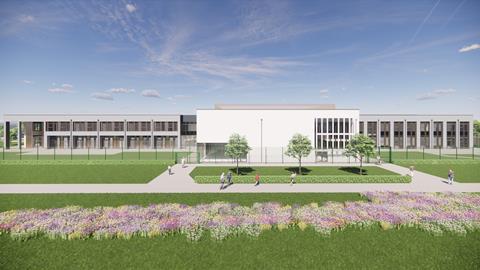Richard Wise, partner at Ryder Architecture, discusses the procurement and timescales involved in the school design process and the resulting impact on design quality
There is little disagreement that inadequate buildings have a negative impact on education outcomes and life opportunities for children. Poor spatial configurations, poor noise separation, overheating in summer or excessive cold in winter, poor air quality and daylight all impact personal performance whether in work settings, the home or places of learning.
By its nature the school estate will always have buildings that are at the end of their useful life, that no longer meet modern teaching requirements or support progressive learning methods. As such school improvement and replacement is a constant, requiring a rolling programme of investment to tackle failing stock and respond to changing demographics.
To manage programme delivery in the public sector there is a process in place orchestrated by the Department for Education (DfE) delivered through contractor frameworks; split by value, region and delivery model, such as off site manufactured solutions (MMC) or more traditional construction building solutions. The focus of the programme is to improve the building stock, but do the respective routes encourage and deliver well designed and well considered buildings, or are these outmoded requirements, which are more about aesthetics than function?
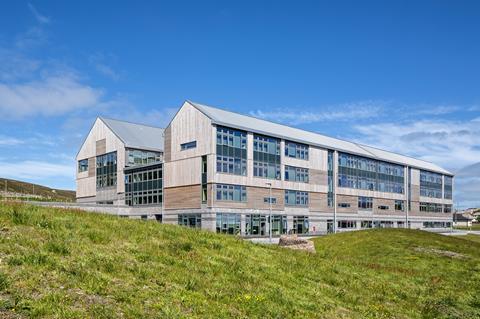
The MMC framework products are varied in quality and the more modular the product, the more temporary the aesthetic and I would suggest other than very few examples the product, however well thought through the assembly, is at its best a shinier version of what it replaces granted with significantly better environmental controls and envelope performance. It is still widely agreed that traditional delivery models produce a better product as there are greater degrees of flexibility to respond to the site and local environmental factors, and they have an inherent quality even if difficult to measure empirically.
Both routes require the input of design teams to navigate through the early design stages as well as the on site delivery. The influence of the designers varies but both routes are here to stay, and some of the results are very good.
Within the constraints we face can good become great?
School design should not be idiosyncratic, but neither should it be a simple application of predetermined arrangements that do not suit circumstance, site, location and place. The 2011 Sebastian James report caused consternation in the design community, as it suggested an ‘out of the box’ approach. It was written on the premise that a predetermined school model can land on any site. The ‘Tesco principle’ is a well honed model of efficiency, a process overlayed with a psychology to encourage the shopper to make decisions that benefit the outlet not necessarily the shopper. As such, the Tesco experience in Kingston Park, Newcastle is exactly the same as the Tesco experience at Kingston upon Thames.
We would all agree there are some benefits to this, for example we know where things are in every store. There is however more to it than our convenience – there is the impact of product location, brand identification and a science behind the entire arrangement that encourages the customer to behave in a certain way. It is worth holding on to that thought. If buildings and their layouts influence our decision making, then surely, they can equally influence education outcomes?
Prescribed guidance
There is a language and grammar to all school design, particularly in the public sector. Other than the very odd exception, every school has similar if not identical components. The endeavours of the DfE collaborating with designers and constructors in leading this process should not be underestimated. The DfE provide a suite of documents, the facilities output specification (FOS), the school specific brief (SSB) and refer us to baseline designs. The FOS defines a working environment that is tightly prescribed to ensure that all the environmental failings listed above are not repeated. This is seen by some as too restrictive, stymying creativity in the design process and in consequence narrowing opportunity.
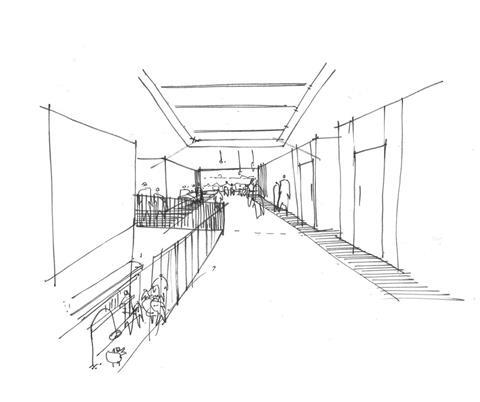
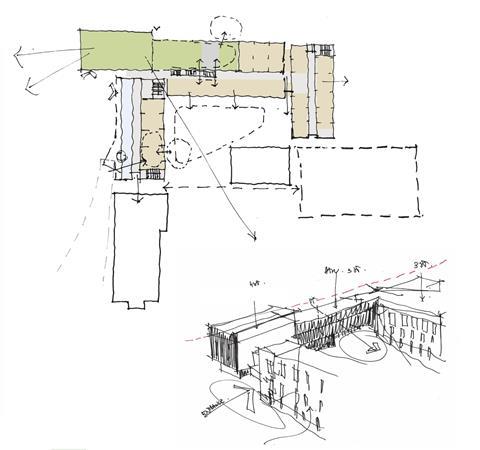
Within reason we all respect rules and would not baulk at designing to meet building regulation requirements. A working knowledge of the FOS is an efficient way of avoiding design issues that arise on every school project. So, the FOS needs to be respected and built upon rather than disregarded as an encumbrance. The FOS is an ‘in plain sight approach’ with area outputs driven by pupil numbers and an associated cost output, both of which gives central government a greater degree of programme certainty. The performance metrics are prescriptive. Daylight, room proportions, air quality, carbon in use and biodiversity net gain requirements, all need due care and attention, and are required to be evidenced in the design solutions to enable central government to consistently measure building performance and the impact of the investment on a local, regional, and national basis.
What is not defined is how the components are assembled.
The baseline designs are templates to visualise the opportunity as a starting point to elicit a conversation and to help finalise briefs for school building projects, for discussion with local planning departments and to define the funding envelope. As the skillsets in local authorities have drifted to the centre, in this case the DfE, the baseline design options have for many organisations become the answer and benchmark to the question before it has even been asked. This is an unintended consequence of a standardised approach but understandable, particularly in a volatile market.
Queen Elizabeth High School and Hexham Middle School
Queensferry High School
Sources: © Andrew Heptinstall and © Keith Hunter
Delivery
The delivery of public sector school programmes involves construction teams from the very off. This is practical and, when applied well, can be the right way to derive value, programme certainty and quality assurance. Working with the right contractors in an environment of trust produces successful buildings, complimented by tried and tested approaches, which have a natural tendency to produce consistent outcomes. This is a result of the knowledge of those involved, the upstream preparations of the DfE and an understanding of how to deliver to the prescribed guidance.
The timescales associated with the opportunities are extreme but have been proven to be achievable, it is not however a process for the faint hearted. The design of a £30m secondary school is ostensibly frozen in a six week period, which has recently reduced to three. The offer, including the financial deal, is reviewed over a period of two to three weeks and then the successful partnership is given preferred contractor status and instructed to progress with securing planning approval. Projects are then on site within three or four months.
These are all significant achievements but is there a cost?
Budgets
Profits are a requirement of any healthy economy, in the schools’ sector they are hard fought, the constructors in the sector purport profits to be at best marginal, which is either seen as prudent fiscal management by the presiding government or over ambitious expectations that can lead to sub mediocracy. Budgets are always on a fragile footing, particularly in the times of high inflation and supply chain difficulties that we face at present, coupled with buoyancy in other markets. Finance will always be blamed for poor design but this is a ‘get out clause’, good design is about doing the very best within the circumstances we operate.
Budgets are diametrically at odds with the one size fits all approach. The Tesco model works as the location is the most sensitive factor and within reason supermarket designs tend to flatten the selected sites to meet this need, as the commercial benefits are well understood and repaid in spades. School investment is certainly required to return a dividend but to the society they service, not a budget line in a business portfolio.
On school sites we constantly wrestle with cut and fill exercises to reduce off site cart away which is not driven by function but cost, and as such has associated compromise. Many school sites equally need to remain fully operational and safe during the works.
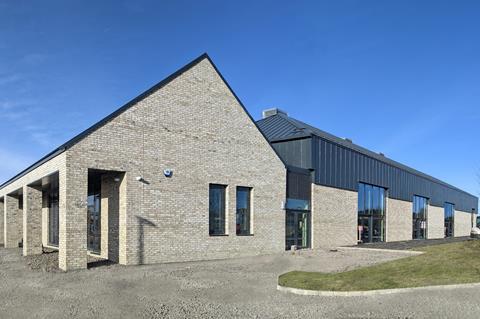
Final thoughts
Within reason schools have always been formulaic as is every other building typology. The drivers change over time which influence form, function and aesthetic. This has been the case since the 1870 Education Act, to the advent of system building solutions such as CLASP in the 1960’s and the proliferation of rendered boxes in the early 2000’s.
Is a good honest answer to the question posed the best we get and is that acceptable?
Critics tend to focus on aesthetics and those who commission projects definitely see a two-tier system, labelling the outputs, accordingly, differentiating their stock by funding route. In our experience it is notable that the best design opportunities preside in Scotland where they enjoy significantly higher budgets and space standards per pupil, and less pressured design programmes, which give some extra time to understand, interrogate and create a sense of place. There is a once in a generation feel to every opportunity and community ownership. This is equally evident in our work in England when commissioned through local authority direct awards.
It is not therefore just budget but the luxury of a little more time to solve problems and as such allocate the budget where it matters. Speed in our experience leads to over designed structures and MEP solutions that are difficult to challenge when timescales are so tight. This in turn impacts design opportunity. The new three week delivery model will take us closer to the ‘out of the box’ solution espoused by Sebastian James, where the predetermined answer will be king as it reduces risk.
There is greater generosity in circulation spaces in the current FOS and the sustainability annex recognises the extra over requirements to fulfil net zero ambitions. The buildings, if well considered, function very well and meet all the measures demanded. There is often however a deprivation in the external environment offered and on occasion a ‘bloody mindedness’ as to which portions of existing estates are retained – creating compromise and a lack of whole site cohesion.
“Time costs money” is a great leveller in business – in design terms however, too little time wastes money if the periods of decision making are too short.
Richard Wise, partner, Ryder Architecture
It is too early to pin the tail on the donkey, will the latest tranche of DfE funded schools with better environmental standards at their core, have a positive impact on a child’s academic performance, as well as their all round personal growth and wellbeing? Will they positively impact how the next generation interact and communicate, work and play, and will they be perceived as community assets or just another machine for learning – disconnected from the potential wider impacts of what are significant levels of investment?
The sums of money expended in the sector are astronomical – from 2015 to 2021 in the region of £24bn was spent on the school estate in England alone. We cannot afford for the creatives in our industry to think work in this sector is beneath them because of how it is procured and feeling shackled by the prescriptive performance metrics that need to be achieved. So do not be put off, embrace the opportunities, fly the flag of good design, recognise honest endeavour, and test the norms by bringing your skills to the sector.
“Time costs money” is a great leveller in business – in design terms however, too little time wastes money if the periods of decision making are too short. Those who know the performance metrics for schools inside out have invested a great deal of time and learnt through experience. The opportunity as an industry to collectively invest more time would in our view add significant value and provide some qualitative opportunities to be realised within the same cost envelope.
Schools have always had a language borne out of the time they were erected, the budget applied, the speed of political need and as such, it is our collective responsibility to do the very best we can, in the arena we inhabit and hope that this generation of schools are recognised as one of those good periods.
Want to hear more?
You can hear from Richard and a panel of experts who all spoke on the topic of Empowering the project team as part of Building’s Winning Work in Education and Healthcare event.
The session is available free and on-demand here





















